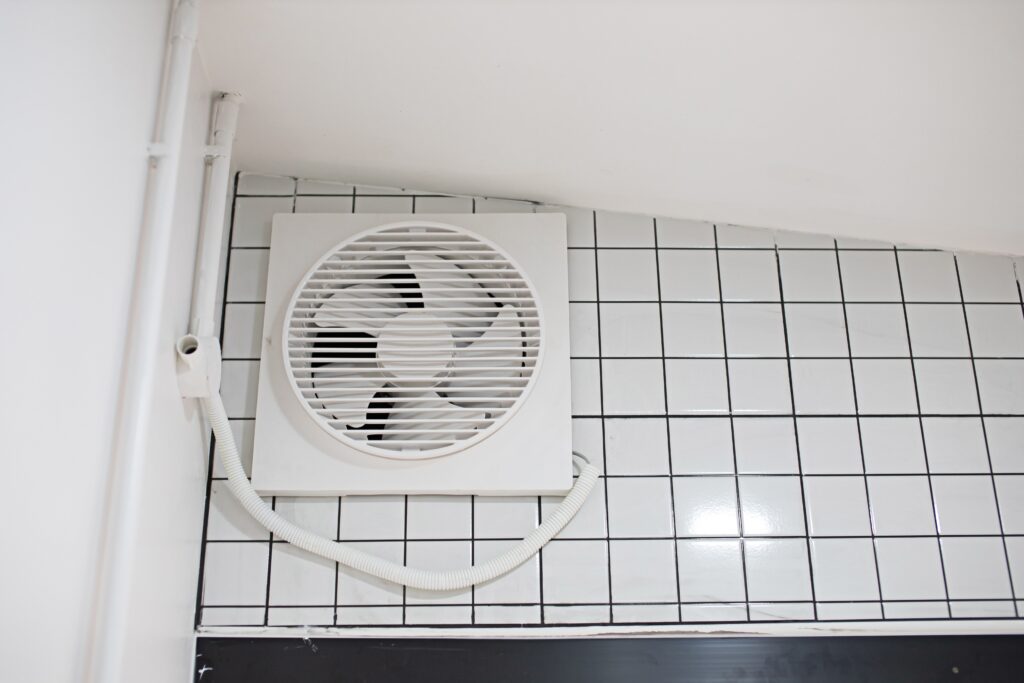Practical Guidance for Healthier, Fresher Living
If you’ve ever struggled with condensation on windows, musty smells, or damp patches on walls, poor ventilation is usually to blame. Knowing how to ventilate a house properly can make a huge difference to air quality, comfort, and even your family’s health. In the UK, good ventilation is also a legal requirement under Building Regulations, so it’s more than just a comfort issue – it’s a necessity.
Why Ventilation Matters in UK Homes
- Moisture control – Daily activities such as cooking, showering and even breathing release litres of moisture into the air. Without proper room ventilation, this moisture leads to damp and mould.
- Health benefits – A steady supply of fresh air reduces allergens, pollutants and irritants, improving indoor air quality.
- Energy efficiency – Fresh air circulation helps balance humidity and temperature, making heating systems work more efficiently.
- Regulatory compliance –Building Regulations Part F requires minimum levels of airflow through new and refurbished homes.
Understanding the Basics of Home Ventilation
Before looking at practical tips about how to ventilate a house, it’s useful to understand the main principles of ventilation:
- Purge ventilation – Quickly removing stale or humid air by opening windows and doors wide for short periods.
- Background ventilation – Continuous low-level airflow through features like wall ventilation grilles or trickle vents above windows.
- Extract ventilation – Fans in kitchens and bathrooms that remove concentrated moisture and odours at the source.
- Cross ventilation -Using opposite house vents or windows to create natural airflow across a property.
How to Implement Proper Ventilation for Each Part of your House
Living Rooms and Bedrooms
- Keep trickle vents or air duct vents open to allow continuous airflow.
- Open windows for 5–10 minutes daily, especially in the morning, to purge stale air.
- Avoid blocking wall ventilation grilles with furniture or curtains.
Kitchens
- Always use an extractor hood or fan when cooking.
- Keep air conditioning vents clear of dust and grease.
- If you dry clothes indoors, ventilate the space by opening windows or using a dedicated room ventilation system.
Bathrooms and Wet Rooms

- Install a reliable extract fan that continues running for a few minutes after showers.
- Consider humidity-sensing fans for automatic moisture control.
- Wipe down surfaces and keep doors closed during showers to prevent moisture spreading.
Lofts, Basements and Garages
- Ensure these spaces have house vents or roof ventilation to prevent stale, damp air build-up.
- For conversions or habitable basements, mechanical air duct vents may be required to meet regulations.
Practical Ventilation Habits for UK Homeowners
Good ventilation doesn’t always mean expensive equipment – often, it comes down to daily habits and proper upkeep. Here are some practical steps every UK homeowner can follow:
1. Open windows strategically
Leaving windows slightly open all day wastes heat and can make your home uncomfortable in winter. Instead, open them wide for 5-10 minutes at a time to create a quick flush of fresh air. This short burst of purge ventilation refreshes your home without dramatically lowering the temperature.
2. Maintain vents
Over time, dust and dirt can build up in trickle vents, wall ventilation grilles, and air conditioning vents, reducing their effectiveness. Cleaning them a few times a year ensures that airflow isn’t restricted and keeps your system working as intended. If you have fans with filters, replace or wash them according to the manufacturer’s instructions.
3. Keep airflow pathways clear
Air needs to circulate between rooms to be effective. Don’t block house vents or cover ventilation grilles with furniture or heavy curtains. Similarly, make sure under-door gaps are left unobstructed so that fresh air can move freely from one space to another.
4. Balance ventilation and heating
It may be tempting to turn off extractor fans in the winter to “save heat,” but this can lead to condensation, damp and mould. Controlled use of room ventilation keeps your home drier and more energy efficient in the long run. Modern fans are designed to run with minimal energy use, so the cost is far less than fixing damp damage later.
5. Check for warning signs
Keep an eye out for condensation on windows, musty smells, or dark spots forming on walls and ceilings. These are clear indicators that your current ventilation isn’t sufficient. Addressing these issues early – whether by improving room ventilation or upgrading air duct vents – can prevent expensive repairs and protect your health.
Balancing Ventilation With Energy Efficiency
A common worry is that ventilating a house wastes energy. In reality, controlled ventilation prevents damp and damage that can cost far more to fix. To reduce heat loss while ventilating:
- Use short bursts of purge ventilation instead of leaving windows open all day.
- Consider insulated air duct vents or draught-proofed wall ventilation products.
- Upgrade to energy-efficient extract fans with timers or humidity sensors.
When to Call a Professional
If your home regularly suffers from condensation or mould, it may be time for a professional assessment. A residential electrician, like DRW, can:
- Check airflow levels against Building Regulations.
- Install or upgrade air duct vents, house vents, or extractor fans.
- Recommend advanced options, such as mechanical systems, if natural methods aren’t enough.
Conclusion
Learning how to ventilate a house is one of the simplest ways to protect your home and health. By combining natural habits, proper use of room ventilation and wall ventilation, and keeping your air duct vents and air conditioning vents maintained, you’ll enjoy fresher air, reduced condensation and a healthier living environment.


